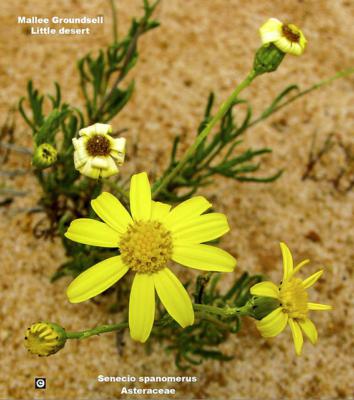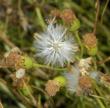
Common Name
None
Family
Asteraceae
Notes
Perennial forb to about 1m tall. Leaves somewhat fleshy, alternating up the stems. Leaves in the mid-region of the stems mostly 2-10cm long, hairless, sometimes with scattered hairs, usually divided, edges of the segments usually entire, sometimes toothed. Flowers yellow, with 8-13 'petals'. Flower heads behind the 'petals' bell-shaped, in open groups of 3-20 at the tops of the stems.
Differs from Senecio pinnatifolius var. pinnatifolius in that the segments of the leaves are narrow oblong to narrow linear (length/width ratio of less than 15). The small bracts at the very base of the flower head are 1.8-3.5mm long, generally brown or black-tipped, often with coarse white hairs. Needs at least a hand lens to see.
Key (pages 29-30), description (pages 61, 63) line drawings (Fig. 1a, 1d page 26 (leaf shape), Fig. 2d, page 27 (phyllaries (bracts around the back of the flower head)), 2e page 27 (calycular bracteoles)), and photo of dried specimen (Fig. 17 page 62) in IR Thompson (2005) "Taxonomic Studies of Australian Senecio (Asteraceae): 5. The S. pinnatifolius/S. lautus complex" Muelleria 21: 23-76. ).
According to this paper, Senecio pinnatifolius var. pinnatifolius occurs well east of the area covered by this key, and the species that occurs in the area is Senecio spanomerus.




